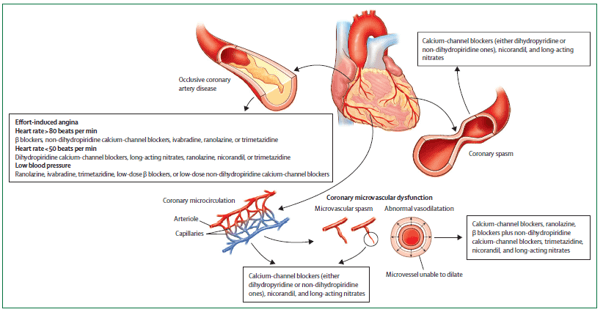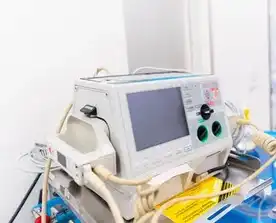
Managing the treatment of angina according to identified underlying mechanisms 1
Fig. The different precipitants of angina and ischaemia necessitate that treatment be directed to the underlying pathophysiological causes, thus affording a more specific, targeted approach to symptom relief.

The proposed pharmacological approach with antianginal agents before declaring treatment failure OMT (Optimal Medical Therapy) to treat angina has been criticized as ambiguous and imprecise How can we label medical treatment optimal if we lack clarity regarding the crucial elements of magnitude, intensity, and duration of pharmacological therapies? As used originally in the Clinical Outcomes Utilizing Revascularization and Aggressive Drug Evaluation (COURAGE) trial, OMT included both intensive lifestyle interventions and all pharmacological therapies that have been shown individually to improve clinical outcomes in placebo-controlled trials. Importantly, OMT was designed to incorporate temporal evolutions of disease-modifying therapies emanating from contemporary randomised clinical trials as new scientific evidence emerged. Thus, OMT represents a constantly moving target intended to reflect current best practice. There is also a need to better define the two fundamental goals of OMT: Cardiovascular event reduction and Improvement in symptoms and quality of life.
Although multiple randomised trials and epidemiological studies have shown that pharmacological interventions and lifestyle modification prevent cardiovascular events, the role of pharmacological therapy for symptom control is less well defined. Clarifying treatment options for patients with chronic coronary syndromes and stable angina It is important to recognise that angina can also occur in the absence of obstructive coronary artery disease. Thus, regardless of whether ischaemic symptoms are due to coronary atherosclerosis or occur without flow-limiting epicardial stenoses, the management of patients with angina and suspected coronary artery disease requires careful diagnostic testing and management to probe and elucidate the mechanisms of anginal symptoms. An important guiding principle is that symptomatic treatment should be targeted to the underlying mechanistic cause of the ischaemic process, whenever possible. Accordingly, the choice of antianginal agents is guided by the pathogenic mechanism, as well as systolic blood pressure and heart rate. For patients whose angina is largely exertional in origin, and in whom blood pressure is normal or elevated, use of β blockers, calcium antagonists, or nitrates is appropriate. Conversely, for patients whose blood pressure is below 100–110 mm Hg, or heart rate below 60 beats per min, the use of other agent slike ivabradine, trimetazidine might be considered better therapeutic choices. Individualised antianginal therapy for symptom control: Agent selection on the basis of the prevailing mechanisms of angina (ie, abnormal vasodilation, coronary spasm, or need for heart-rate reduction), hemodynamics' (ie, heart rate and blood pressure), comorbidities, drug interactions, and patient
To know more : Click here
1.Published Online January 13, 2022 https://doi.org/10.1016/ S01406736(21)02045-6

Keep up to date with our content
Subscribe to our newsletter so that you are always up to date with the news.



